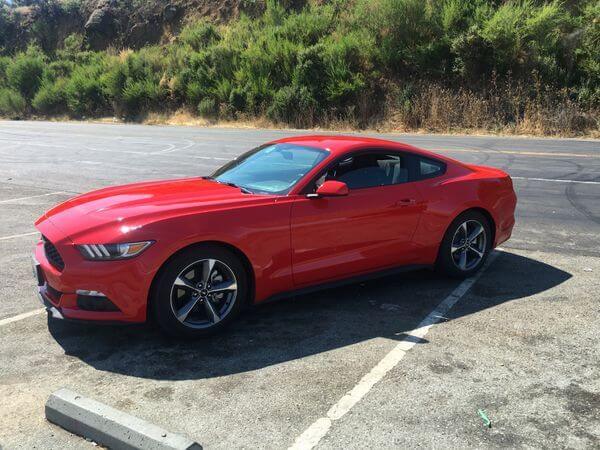Million Mile Secrets reader, Ana, commented:
What’s your recommendation for primary auto rental insurance if I pay using the Chase Sapphire Preferred or Chase Sapphire Reserve card and the rental period is longer than 31 days?
The Sapphire Preferred and Sapphire Reserve cards are great choices to pay for car rentals. Because you get primary insurance coverage for collisions and damage.
But with these 2 cards, the coverage only applies to rentals of 31 consecutive days or less in the US and most foreign countries.
To get around the time limit, I’d recommend returning your car and renting another one. This way, you’ll restart the clock for insurance coverage.

Having Primary Auto Rental Insurance With the Sapphire Preferred and Sapphire Reserve Is a Great Perk. But It Only Works on Rentals of 31 Days or Less
I’ll share tips for getting coverage on long car rentals!
Save Money Using Primary Rental Car Insurance With Certain Credit Cards
Link: 13 Credit Cards That Offer Primary Rental Car Insurance
Link: What to Do When Renting a Car & You Don’t Have Personal Car Insurance
The Chase Sapphire Preferred and Sapphire Reserve come with primary rental insurance when you use one of the cards to pay for your rental and decline the rental company’s collision damage waiver (often called CDW or LDW).
The primary rental insurance covers theft or damage to your vehicle. But NOT damage to other vehicles, property, or injuries.
For liability coverage, you’ll have to rely on your own personal auto insurance or purchase a supplemental policy from the rental car company.

Primary Rental Insurance With the Sapphire Preferred and Sapphire Reserve Covers Damage to Your Vehicle, but NOT Another Vehicle, Property, or Any Injuries
The rental car insurance with Sapphire Preferred and Sapphire Reserve cards applies to rentals of 31 consecutive days or less in the US and most foreign countries.
If you’re planning a longer car rental, here are 3 tips to make sure you have coverage.
1. Book Multiple Rentals
For a trip longer than 31 days, the easiest way to keep your primary rental insurance is to book multiple rentals.
You can book one rental less than 31 days and return the car. Then, pick up a new rental for the remainder of the trip.
This is an ideal strategy for folks who will be staying in the same area and can drop off the car where it was picked up.
On a one-way road trip, you can still book multiple rentals and swap cars along the way. But one-way rentals are typically more expensive than booking a round-trip.
That said, I’d rather pay slightly more to book 2 separate one-way rentals to have primary rental coverage for the entire trip.
2. Purchase Coverage With the Rental Car Company
You always have the option to purchase a loss or collision waiver from the rental car company. But for a long car rental, this can be very expensive option.
For example, I searched a 42-day rental with Hertz. And the loss damage waiver for this sample itinerary costs ~$1,344.

You Can Purchase a Damage Waiver From the Rental Car Company. But This Can Be a Significant Expense!
While purchasing a waiver is a significant expense, it can potentially save you money should you have an accident with your rental car.
3. Check Your Personal Auto Coverage
Before purchasing a waiver from the rental car company, you should check what’s covered on your personal auto policy.
Because if you already have sufficient coverage, you can avoid extra expenses.
For example, if your rental car is damaged or stolen, your Comprehensive and Collision coverage on your everyday auto policy might cover this.
I’d recommend talking with your insurance agent or company to confirm the coverage you get when renting a car.
Bottom Line
The primary rental insurance you get with the Chase Sapphire Preferred and Sapphire Reserve only applies to rentals of 31 consecutive days or less.
If you’ll need a car for longer, I recommend booking multiple car rentals. You can book one rental less than 31 days and return the car. Then, pick up a different car for the remainder of the trip.
You also have the option to purchase a loss or collision waiver from the rental company. But this can be very expensive. Or check your personal auto insurance policy to see if you can avoid purchasing supplemental coverage.








